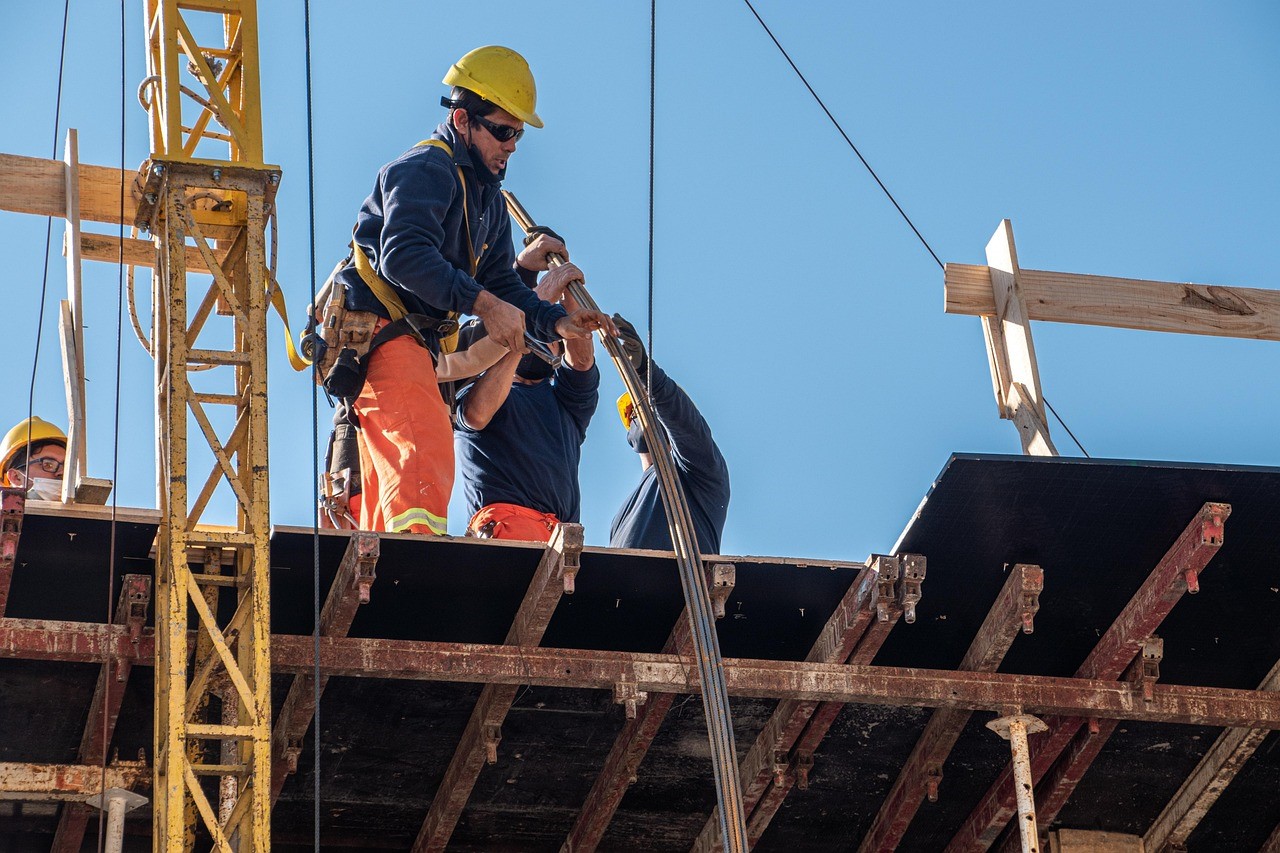Learn what personal protective equipment employers must pay for in Canada. Discover legal requirements, industry-specific PPE, and best practices for compliance

Most heavy industries in Canada have inherent risks due to the nature of the jobs that people must do in and the environments in which they operate. Workers can be mining minerals underground. They can be installing or repairing power cables at great heights. In some cases, workers must also deal with the high probability of heavy debris falling overhead. And these are just a few examples of the risks that workers must contend with across a diverse range of industries.
These workers also need to use equipment that can do all manner of harm if not maintained or used properly. Protecting against these situations mostly lies with using adequate personal protective equipment or PPE.
Using PPEs are not only necessary but also mandated by different laws and regulatory bodies like the Canadian Labour Code and local regulations in the province that a company operates. One of the most important implications of the legally mandated use of PPEs is who must pay for them? Does the employer pay for their own PPEs out-of-pocket or do their employees shoulder the costs? Who exactly provides the PPEs – the employee or the employer?
When it comes to PPEs and employees’ safety, these and many other questions come up, along with:
-
What PPE does an employer have to provide?
-
What PPE must an employer pay for?
-
Under what conditions are employers required by law to provide PPE for workers?
In this article by Canadian Occupational Safety, we’ll discuss what personal protective equipment must an employer pay for in Canada and other pertinent topics. So, let’s dive right in.
What are the employers’ duties when it comes to PPEs in Canada?
Employers are required by the Canadian Labour Code to provide their employees with the PPEs they need to do their jobs safely.
The part in the labour code that describes employers’ duties in providing workers with PPEs is Section 125, subsection 1, part L. This section states that employers must provide every employee who has access to the workplace with the prescribed safety materials, safety equipment, devices, and clothing for their industry. This includes the necessary PPEs that are up to standard and can ensure the appropriate level of protection when doing their jobs.
In addition, employees are obliged to use all safety supplies, tools, gear, and clothes that the employer provides or that the labour code specifies. Employers and employees alike should note that the following workplaces are subject to the Canada Labour Code:
- airports, railways, ferries, and canals
- banks
- bridges and tunnels
- cable systems, radio, and television broadcasting
- grain elevators with Canadian Grain Commission licenses, including feed warehouses, flour mills, and companies that are in the business of cleaning grain seeds
- highway transportation
- petroleum production and exploration on federally controlled lands
- pipelines
- shipping services
- telephone and telegraph systems
Under the rules set by the code, employers are required to see to it that each of their employee’s health and safety are protected while they are at work. Meanwhile, to ensure their own health and safety and that of others, employees are obliged to enact the necessary preventative measures.
Employers and employees are advised to have an increased awareness and understanding of workplace hazards via CCOHS-compliant safety training. One way to do this is to train or hire a CSP who can develop safety systems and protocols and establish a strong safety culture in your organization.

What personal protective equipment must an employer pay for?
The Canadian Centre for Occupational Health and Safety (CCOHS) states that employers are obligated to ensure the health and safety of their workers, including providing them with the necessary PPE. But when it comes to whether the employer or the employee should pay for the cost of the necessary PPE, there is no universal rule across Canada’s provinces and territories.
In fact, in Canada, the word “provides” when it comes to PPEs does not always mean that the employer is obliged to supply PPE to their workers at no cost to the workers. That’s because the wording and interpretation in each jurisdiction varies.
The meaning of “provide” in legislation
A major caveat is that there is no specific legal definition for the word “provide” in any health and safety legislation in Canada. The provinces and territories rely on everyday usage and dictionary definitions whenever “provide” comes up in legislation.
A serious implication of this is that the employer may not always be obliged to pay for all their workers’ PPEs. In some cases, employers may choose only to assist workers in finding and ordering the necessary equipment. Another option is to make the necessary equipment available for purchase via the employer themselves.
But in most cases, employers will choose to pay for some or all the PPEs. The party that pays for the PPEs may also be stipulated in the employment or union contract. Such agreements can detail which party is responsible for the entire payment or what portion of the cost is covered by the employer or employee.
The laws on PPE procurement in the different provinces and territories
As stated earlier, there is no universal rule when it comes to what personal protective equipment must an employer pay for specifically. Legislation differs across jurisdictions and can be changed or modified by each province or territory from time to time. For clarity, employers and workers are advised to refer to the rules of their respective jurisdictions.
Jurisdictions where employers must provide PPE at no cost to workers
This is a mixture of provinces and territories, including:
- Northwest Territories
- Nunavut
- Québec
- Saskatchewan
Jurisdictions where either party must pay for specific types of PPE
This category is more complicated, with each state and the Yukon territory each having their own set of rules when it comes to who pays for the required PPE. Here’s what it’s like in these states and in the Yukon:
-
Alberta - in Alby, the employer is required to provide and pay for respiratory protective equipment whenever it is necessary. However, it is not specified whether the employer or employee pays for any other PPE.
-
British Columbia – in BC, the worker is responsible for the clothing that protects them from the elements. They must also be self-sufficient when it comes to general purpose gear like work gloves, footwear, and safety headgear like hardhats. However, it's the employer’s duty to provide and pay for any other required PPE. Agreements can be made for the employer to also pay for the items listed under the worker’s responsibility.
-
Manitoba – generally, workers here are required to provide their own headgear and protective footwear. The employer’s responsibilities include making sure that the PPE is properly used and to provide workers with equipment appropriate for the workplace risks at no cost to them. Employers in Manitoba must also follow the rules on cleaning, storage, repair, and replacement of PPEs.
-
New Brunswick – Worksafe NB, a Crown corporation governing the province’s Occupational Health and Safety Act, says that employers must provide PPEs but not necessarily pay for it, while ensuring that these are maintained, remain accessible and are used by workers.
-
Nova Scotia – In Scotia, the employer and employees agree to decide who pays for the PPE and if the cost is to be shared. However, their Occupational Safety General Regulations require the employer to provide or purchase specific devices. Employers must provide respiratory equipment, personal floatation devices, work clothes, PPE associated with rechargeable storage batteries, energized electrical installations, and PPE for confined spaces.
-
Yukon territory – Workers here typically source clothing that protects from the elements, along with the necessary work gloves and footwear. Employers in the Yukon must provide all other PPE like protective eyewear, and specialized clothing as needed.
Jurisdictions that say “provide”, specify use only, or aren’t specific regarding who purchases:
- Canada in general
- Newfoundland and Labrador
- Ontario
- Prince Edward Island
Regulatory framework for PPE in Canada
The regulations and regulatory authorities overseeing PPE in Canada consists of various guidelines and standards meant to ensure the safety and health of workers in different industries. This framework helps organizations with the rules and guidance on the tools necessary to protect workers from workplace hazards.
CCOHS on PPE regulations
The CCOHS is the regulatory body that governs and provides the guidelines for PPE requirements like the proper selection of PPE and its care. The CCOHS also provides guidelines for making risk assessments to enhance workplace safety and guidelines for procuring the appropriate safety equipment.
CSA on PPE standards and guidelines
When it comes to the proper design, care, and use of PPE, the Canadian Standards Association (CSA) handles these guidelines. CSA standards are essential for organizations to comply with legislation on workplace safety.
These standards also ensure that the PPE provides sufficient protection from the risks associated with specific tasks. Compliance with CSA standards is essential for companies to maintain a safe working environment while minimizing any health risks connected to the use of PPEs.
Hierarchy of controls
Governed also by the CCOHS, the hierarchy of controls lists the various methods for hazard elimination or mitigation. The hierarchy is listed from the highest level of mitigation to the least effective in removing workplace hazards. They are composed of three levels of controls and are as follows:
Level 1:
-
Eliminate the hazard
Level 2:
- Replace the hazard with a safer alternative
- Isolate the hazard from the workers
- Reduce risks via engineering controls (e.g. guardrails)
Level 3:
- Reduce exposure to the hazard with administrative controls (e.g. reassigning workers to other locations)
- Using PPE
When employers cannot eliminate or mitigate hazards with these measures, PPE is the last resort to protect employees. To enhance the effectiveness of the Hierarchy of Controls, some safety professionals get creative and add more relevant criteria based on their experience.
The Internal Responsibility System (IRS)
This refers to the company’s internal safety committee or safety representative and much more – the IRS is a collaborative effort between the employer and its employees. This is typically used to resolve health and safety concerns in the workplace or when performing work activities. The IRS is a framework embedded within the Occupational Health & Safety Act and mandates that every individual in the workplace must help maintain health and safety standards.
Employer & employee responsibilities
To ensure workplace safety, both employers and employees must contribute to the effort. Here are the responsibilities that they are expected to carry out:
For employers
-
Establish a health and safety committee (HSC) or assign a health and safety representative. The HSC should be comprised of both employees and management. This serves as a way for both employees and employers to have a say in their workplace safety.
- Ensure that work is performed with safe work practices.
- Train employees about the work hazards. Training includes how to work in safety, including how to handle, store, and dispose of hazardous substances and how to handle emergencies.
- Report all critical injuries to their respective department immediately.
- Appoint a competent supervisor.
For employees
- Do the work in compliance with the laws.
- Report any workplace hazards.
- Do their work in a way that does not cause an unsafe situation.
- Use any PPE and/or safety equipment as directed by the employer.
There are many rules and regulations, both federal and local, that companies must abide by when it comes to ensuring their workers’ safety. This includes providing them with the necessary PPE. Remember that companies that fail to comply with safety regulations not only risk workplace accidents leading to serious injury or even death but are also exposed to harsh penalties.
When it comes to who pays for PPEs, it’s often the best and hassle-free move for the company to shoulder the costs. Reputational harm, legal fees, compromised safety, injured workers and the accompanying penalties are way more expensive than a few thousand dollars for the right PPE.
Did you find this piece on what personal protective equipment must an employer pay for an eye-opener?
Let us know your thoughts in the comments





